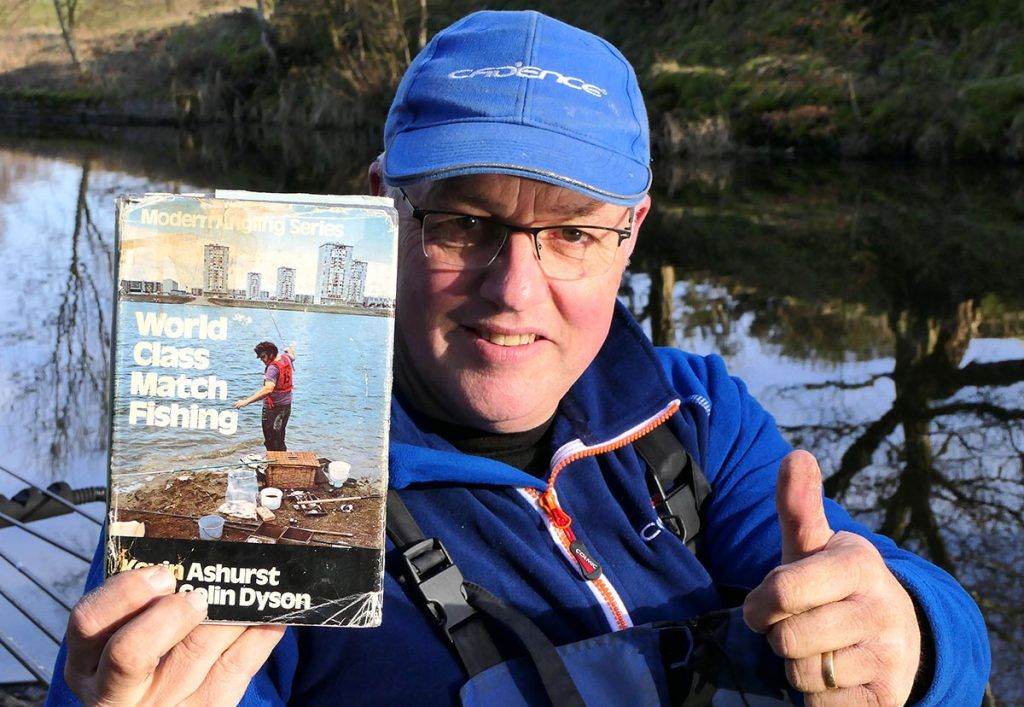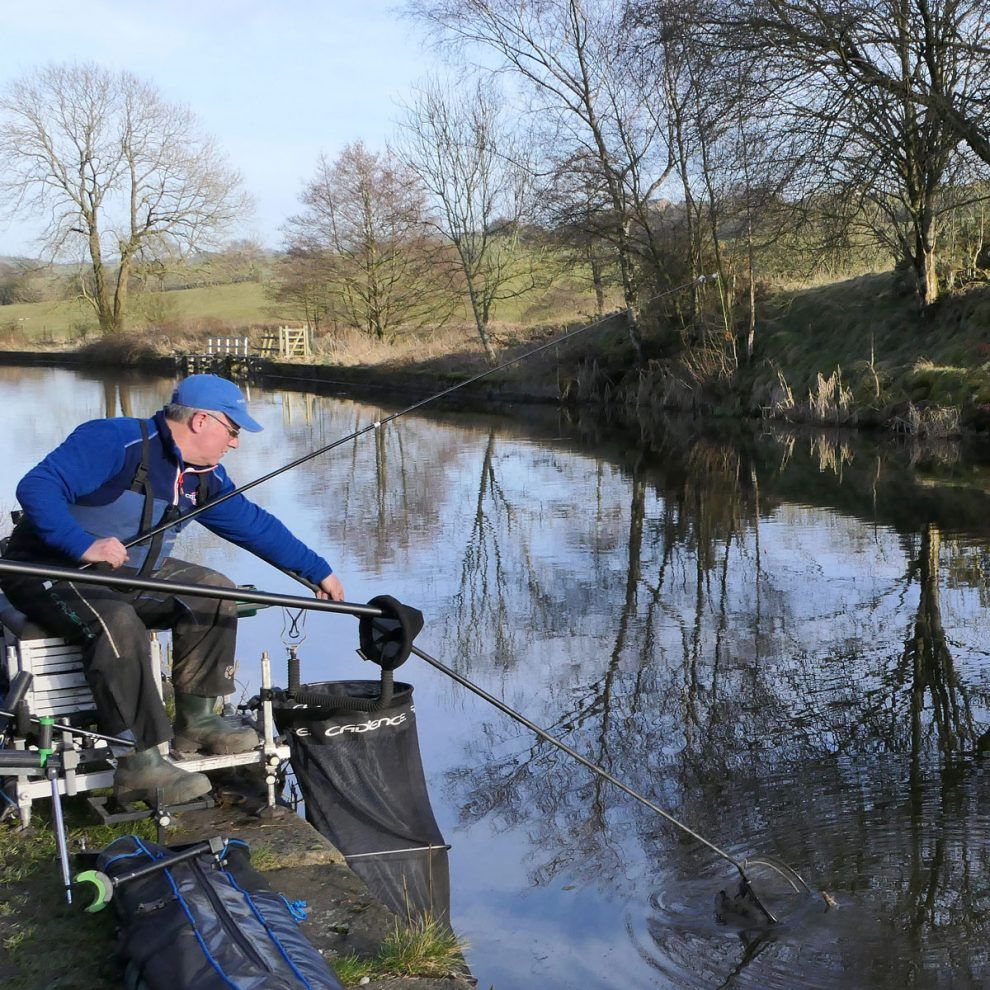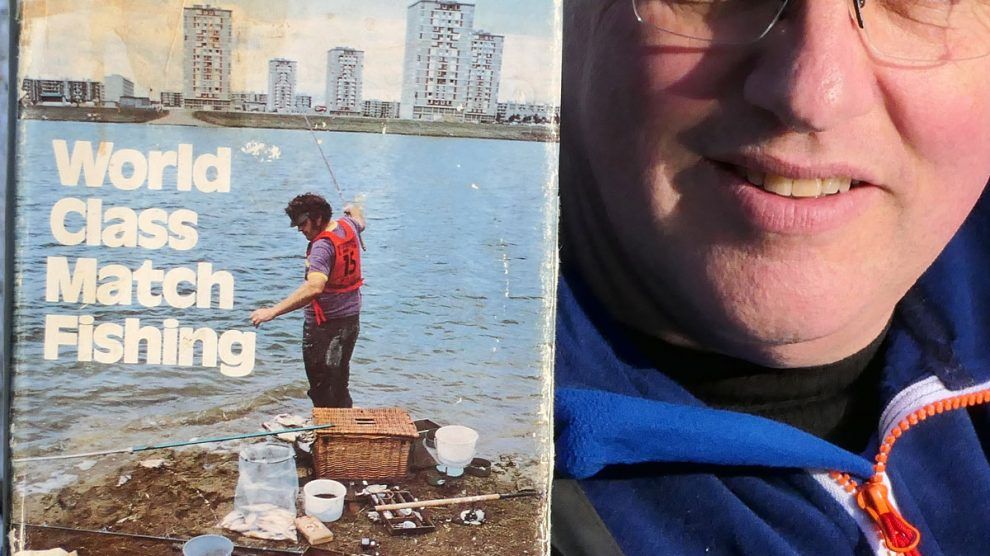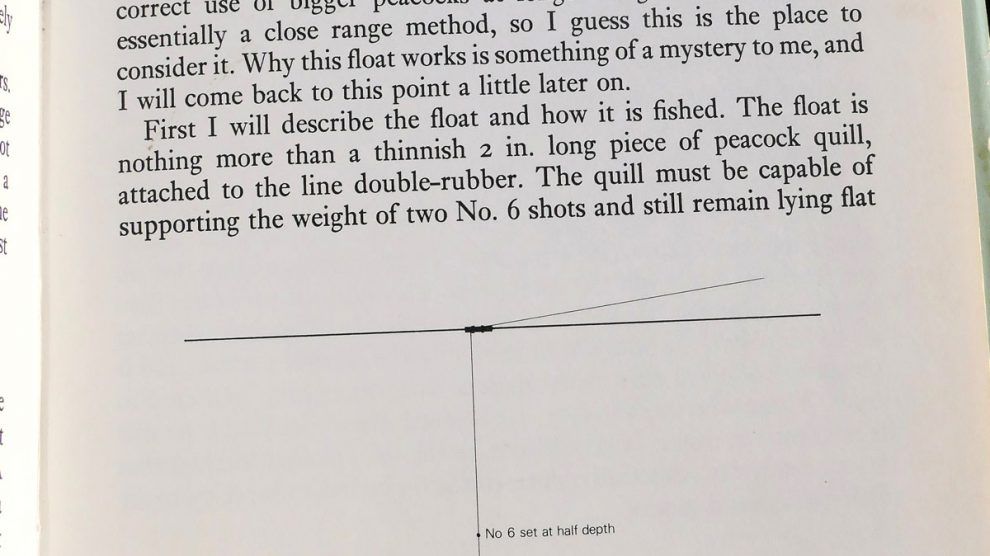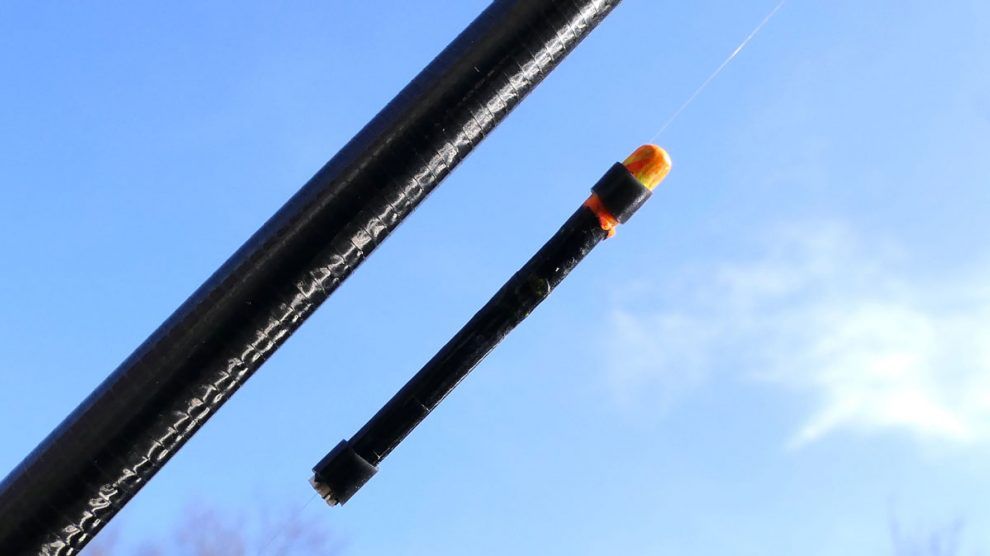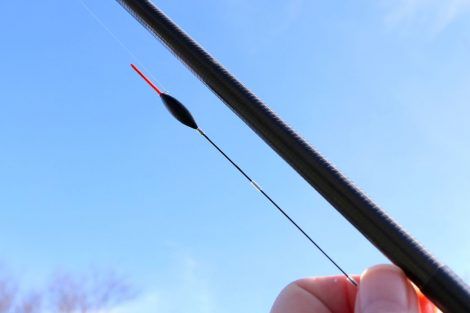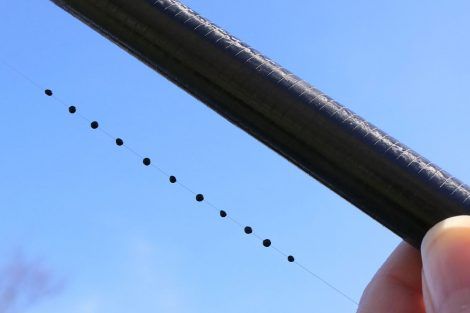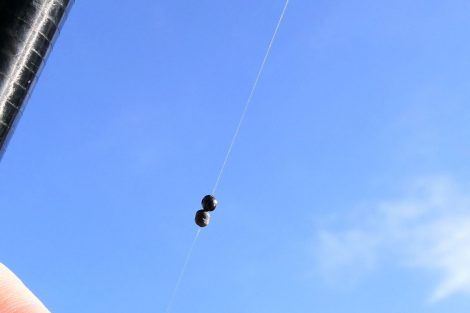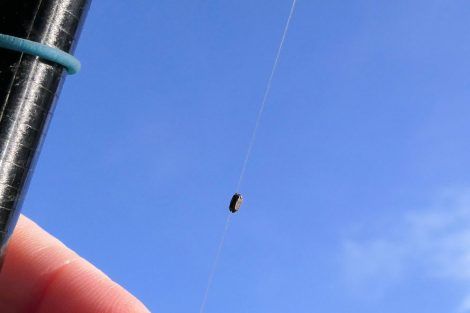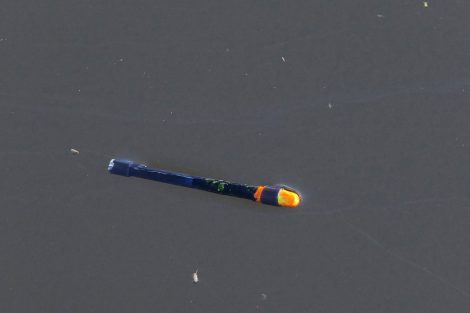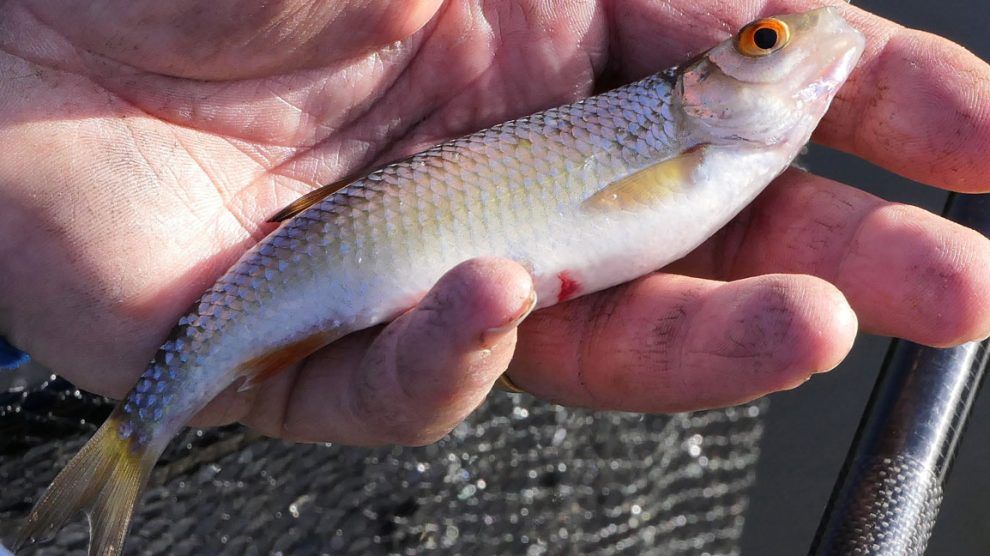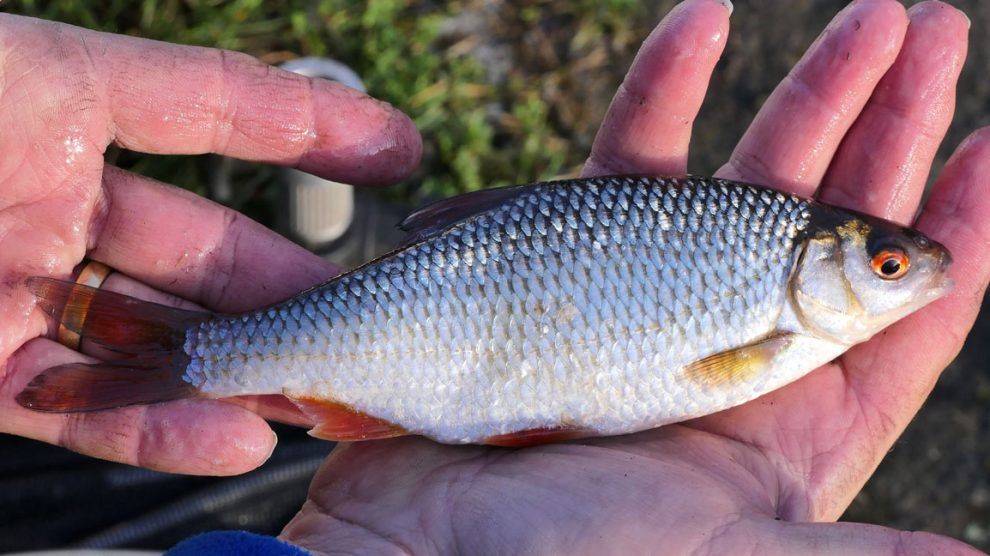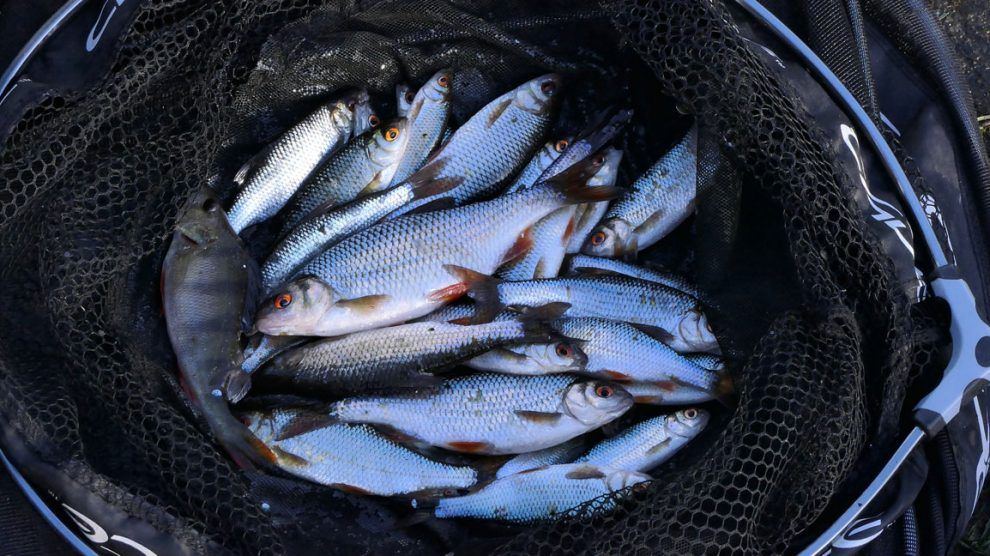Cadence ambassador Alan Barnes explains how – by adding a ‘forgotten’ flat float method to your armoury – you can go from an ‘also ran’ to a match winner.
The main subject of this blog is hopefully one that readers will find thought- provoking and more than a little interesting if you want to add an effective pole float method to your arsenal.
However, before I go any further in its explanation, may I just doff my Cadence baseball cap to match doyen Kevin Ashurst. We are talking about what our hero Big Kevin described in his book, World Class Match Fishing, as ‘the flat float’. We are not talking about the type of flat floats used to pole fish deep, powerful swims on rivers; the type seen so often on international matches.
No, we are talking about an unremarkable looking float, a simple two-inch length of peacock, attached to the line ‘double rubber’ and shotted so that it ‘just’ lays flat on the surface.
We will get to the physics of how and why it works so devastatingly effectively in a moment, but whilst you are scratching your head or simply dismissing it out of hand as a ‘crank’ method, let me give you the back story of how I came to start using it, only 12 months ago.
The boss man, James Robbins, phoned me one day to let me know he had been contacted by an angler who wanted to have a look at our top-of-the-range Cadence CP2000 pole. Would I be able to spare an hour to show it to him?
I gave the chap a call and he came over to my house for a waggle. Suitably impressed by the pole, we then sat down in the kitchen for a cup of tea and, as anglers always do, a natter about our fishing and what we were both up to at this time. This was last February, shortly before the Corona Virus pandemic took a hold in the UK.
As we sat down, my guest said: “Have you ever read Kevin Ashurst’s book, ‘World Class Match Fishing?’
A well-intended but daft question! I’d owned the book since 16 years of age. Almost 42 years ago. (Getting old these days!) It cost me £3.50 in 1979, according to the price on the inside cover.
As I said, an interesting question, so I was sitting, wondering what was coming next.
Well, what he told me was that there was a bit in the book about what Kevin referred to as ‘the flat float’ and that on a recent winter league match on a deep and difficult reservoir, he had put it to good use to take second place on a 35-peg match.
The question, he said, was could I remember reading about the flat float?
As an avid reader of Kevin’s masterpiece, yes, I had read it, but as I am sure many other people have done, I had dismissed it as ‘old hat’.
With a grin on his face, he started to tell me about his success with it. He said that on that winter league, whilst to a man the rest of the field doggedly sat watching motionless quivertips, fishing for imaginary roach and bream, all clipped up, fishing on a tanner and using braid to show the merest hint of an indication, he cleaned up with 8 lb of quality caster roach using Kevin’s crude and unconventional-looking flat float rig.
He explained that his thinking was that the area close in, along the bottom of the stone setts used to build the sides of the reservoirs was an unexploited area.
He reasoned (correctly) that roach and perch would patrol along this area as it was a natural food-holding area. The stone setts, he continued, always gave way to silt, where they ended, and here any food would end up and it was a form of underwater feature in itself.
He had applied a bit of thinking and watercraft to his tactical approach that day and so, while setting off with a feeder approach, he never forgot to keep flicking four to six casters in six metres from the bank, at regular intervals, where the depth was around 11 feet.
And when he switched to it, three hours in and having caught next to nothing, the roach were primed and ready. He caught 20-odd fish for eight pounds, which tells its own story about the quality of the stamp he was netting.
“You should give it a try, Alan,” were his parting words as he climbed into his car to head off home.
Well, it certainly got the old cogs turning and 40-plus years of fishing have taught me never to dismiss any fish-catching idea lightly.
I dug out the book and reacquainted myself with the information, made a flat float by cutting two inches off an old waggler, experimented with its shotting capacity at home using our gardening water butt, and went and tried it on a local rezzy.
The peg was 10 feet deep at six metres and the float carried two number eight shot plus a number 10 dropper. The very interesting thing about the shotting was that if I added an additional No 12 dust shot, the float cocked and slowly sank. Take the no 12 off and the float sat flat on the surface. Talk about critically balanced tackle!
So on to my test day and for the purists out there, at the business end I used a size 20 Colmic N957 nickel hook to a 0.08mm Colmic Teck Stream hooklength.
Alan’s Stillwater Caster Setup
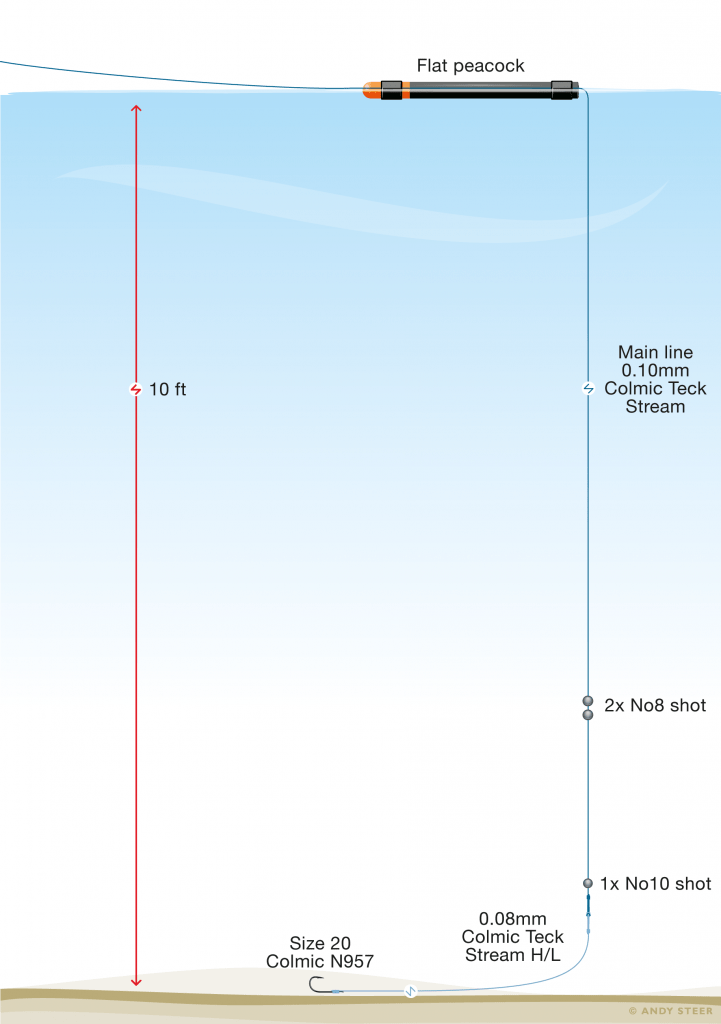
I employed a spray bar, so that I could hold the rig in place slightly to my right at six metres out and fished the rig on the top six of my Cadence CP2000 pole, with a size five Preston Slip elastic set through the microtip and the number two section.
I fed the swim for a couple of hours by hand, with a few casters and some hemp, while fishing the tip, then switched and wondered what would happen.
Well, I didn’t wait long, maybe a minute or so, before I saw the float start to tremble momentarily before it simply cocked and vanished, all in one movement.
Bingo! A steady lift of the pole saw four feet of elastic pour from the pole tip and fish number one was duly netted, an eight-ounce roach. Interesting to say the least! I then went on to catch around 16 more roach to eight ounces, a skimmer of a pound, a pound-plus perch and even a few gudgeon. I had around six pounds in two hours. Back in the car park another angler asked how I’d got on so I told him and he was impressed, saying he had fished the tip for not a lot. Maybe there was something in this ‘new-found’ old approach?
Now what I found most enlightening from an angling point of view on this day was this: The wind was a moderate breeze blowing from my right to left up the rezzy. However, when I laid the rig in, even with so little shot and with such a light set-up, the float managed to pick up the undertow and was tracking to my right. I was able to plumb up and set the float to fish six inches overdepth.
Of course, with peacock quill being such a buoyant material, the set-up allowed the hookbait, a single caster, to trip through with the tow, and the roach found this irresistible.
If I may quote the great maggot breeder and former world champion from Leigh, from his book, he stated:
“The success of this method, on its day, suggests supreme sensitivity, but common sense suggests the rig is anything but sensitive. How come fish which are capable of offering a nudging bite on conventional tackle will tow a flat peacock a couple of yards and then upend and bury it?
“It seems to make nonsense of anglers’ theories about sensitivity. It does not fit at all in the general pattern, and it seems so cockeyed that many anglers have never even bothered to try it.
And this is the killer sentence from Kevin:
“Those who do, however, are amazed when they find out how well it can work at certain times. It should not be the unexploited method that it is, even today, especially since it can be varied to meet so many different circumstances.”
Naturally, I have to agree with what this piscatorial genius was saying. Since that initial trial of this method over 12 months ago I have played about with it and have always caught with it. The beauty lies, in my opinion, in its versatility.
You can fish it in inches of water, tight across a canal, catching spooky fish that would not accept a conventional float with a wire or carbon stem sitting even a couple of inches under the surface. In fact, Kim Milsom touches on using this method in shallow water on canals in his book about match fishing, so he was also on to how effective it could be. Perhaps Kevin told him about it when they were England team-mates in the early 1990s?
Getting back to its versatility, you can fish it at half-depth in deep water when fish are coming off the bottom to intercept feed on the drop, or you can nail a bait such as a big piece of breadpunch, 15 inches overdepth down the middle of a canal on a blowy day. And it works, sometimes gloriously so!
I put it to good use on a Wigan AA midweek match last autumn. I was fishing a length at Gathurst where the M6 goes over the canal which I’d never fished before. The peg I had drawn was said to be okay and that skimmers could show there from time to time.
I had fished the previous week’s midweeker and caught next to nothing on a conventional breadpunch rig while old campaigner Tony Prescott, to my left, had single-mindedly fished a 6mm punch in the track and had six bites for 6lb plus – six big skimmers. A lesson learned. Don’t fish like a wuss when on individual matches!
With this in mind, I had decided rightly or wrongly that I wasn’t going to fanny about with my bread approach next time out. These are individual matches so a bold approach never hurts in such circumstances, although in a team match I would apply a different, more tactical points-gathering approach.
So, at Gathurst I decided to set up the flat float, teamed with an 18 hook and the six mm punch. At the all-in, in went two decent potfuls of liquidised bread at seven metres, followed by the flat float with the 6mm ‘butty’.
Within seconds the float skidded a foot across the surface and buried. A four- ounce roach was netted. Same next put-in, same third put-in, then fourth put-in, what’s this? Six feet of soft-set number five elastic was bumping about in the cut and a minute or so later up comes a pound roach. Several smaller fish followed and after an hour I gave them another pot of bread and I caught another roach nudging a pound, plus several smaller samples before the bread swim died. It was a very good start with which to attack the rest of the match.
The important thing is this: When you get bites on the flat float you seldom miss them and more importantly, you never seem to lose fish with hook pulls. I can only assume this is down to the sensitivity of the float. You are, in essence, slack line fishing, but with a float. By the time the fish has sucked in the bait and swum off, feeling no resistance, it is too late. The float vanishes and the fish is hooked.
Back to the Gathurst match. Because of using a spray bar with the flat float, it meant I had both hands free to consistently feed a hemp swim across at 13 metres and I fortunately went on to catch a couple of pounds of quality roach on the black stuff, narrowly missing out on the match win. In fact, a mere five ounces separated the top three, but I know that the flat peacock certainly put me in a great position that day and I went home £50 better off and thinking about the float’s possibilities.
I then used it on a winter league match and caught several skimmers on a blowy, difficult day for decent team section points, when achieving good presentation in gale-force winds was difficult using a conventional top and bottom float.
Like I said, it is versatile.
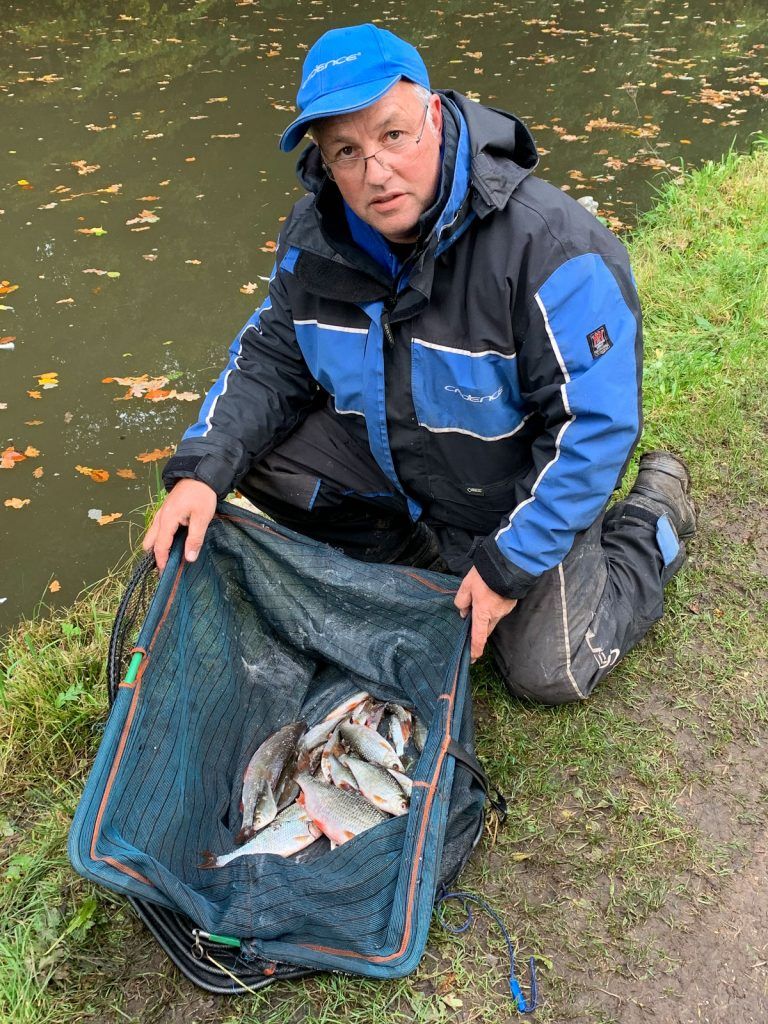
To demonstrate the float’s effectiveness for this blog, I met up with cameraman Ian Chapman on the Leeds-Liverpool Canal on Withnell Angling Club’s stretch of the Leeds-Liverpool Canal at Finnington Bridge, just outside Blackburn.
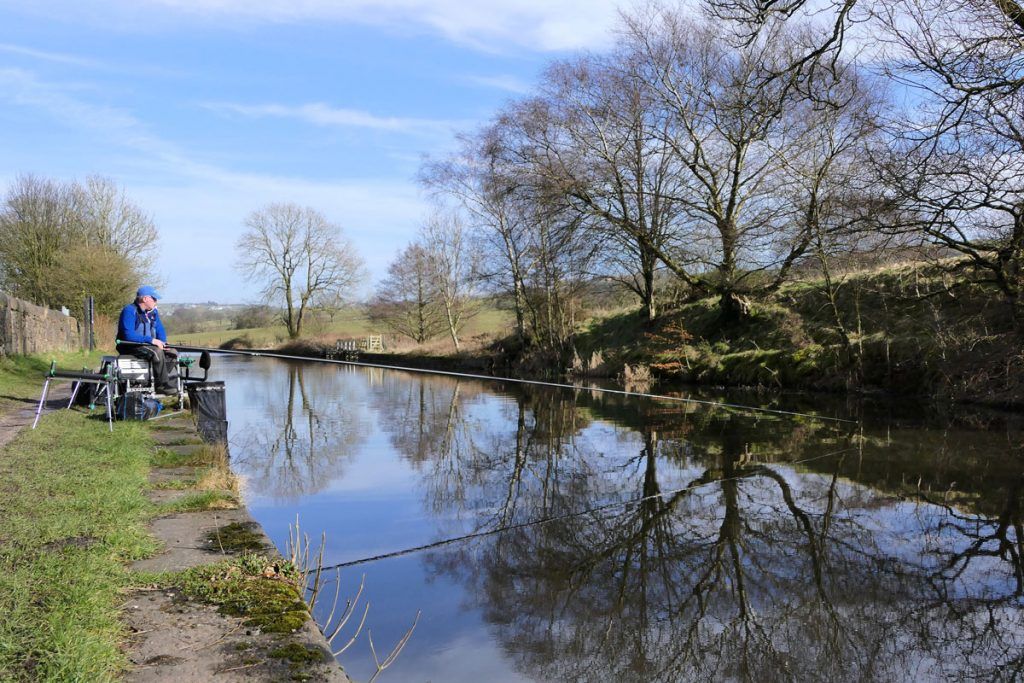
Typically when blogging, we did not choose the best day, with bright sunshine hampering sport to some extent. But I still caught enough to show what it can do, fishing the flat float alongside three other rigs.
I fished the flat peacock down the middle in five feet of water and while it was hard going with small fish only showing, it was another ‘learning day’ with this float.
A lot of the roach were an ounce or less but you can still catch them on the flat peacock, and a sight quicker than on a conventional float. Let me explain: My conventional bread rig for catching on the drop, a 0.2g carbon stemmed pattern made by my mate John Scruton, was shotted with six no 12s and four number 13 shot, sensitive enough when dotted to a dimple. The rig was set to fish two inches off bottom.
When I laid this rig in after 20 seconds a bite would start to develop. You could watch the bristle moving slightly and this might take a further 20 seconds. Finally, the float would ‘just about’ bury and this whole process took an average of sixty seconds.
The result would be one of two things; either a hooked fish or a missed bite.
However, laying in the flat float, shotted with two number eights at mid-depth and a number 10 shot six inches from the hook, within seconds you would see the float start to tremor. This meant one thing, a fish was mouthing the bread.
Alan’s Bread Rig
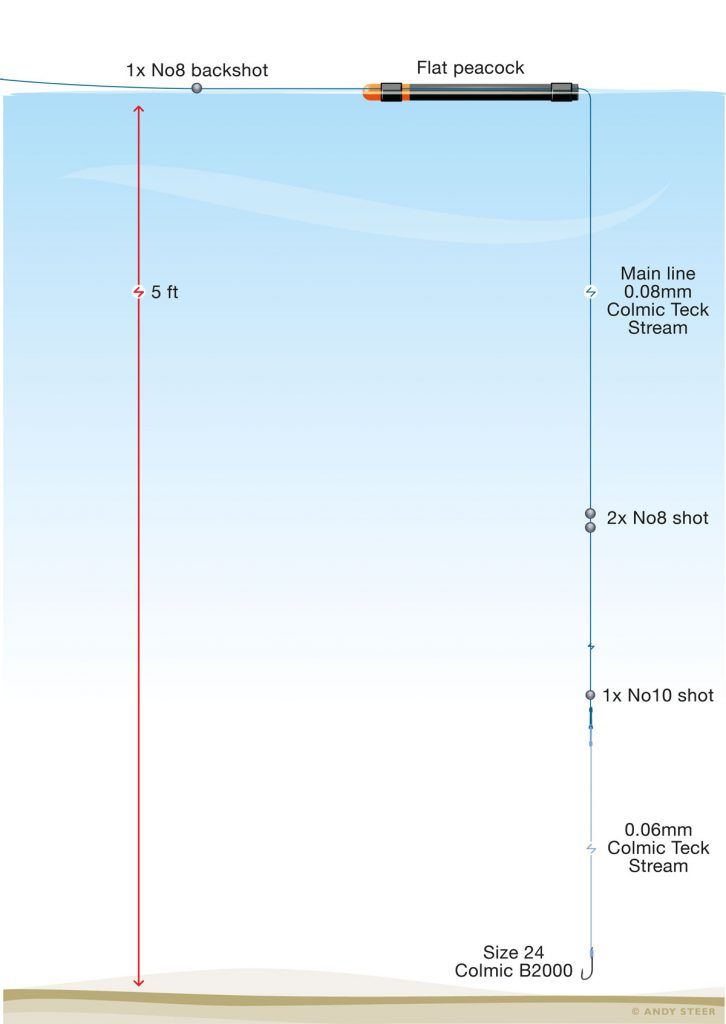
At this point you could lift and the fish was on…every time…no missing bites. Saving 30 seconds each put-in. Add that up over five hours and it is a lot of time saved and more fish in the net. I am sorry if I am beginning to become Brian Rigby-esque with my match fishing time management, but it is an important consideration.
Don’t get me wrong. We are talking about catching small fish here on this day with Chappy on the camera. On days when ‘crumpers’ are in the pantry, you don’t get tremors, the float just cocks and vanishes towards the bottom in a split-second.
On our blog day I also caught several roach on a conventional caster approach with a Ron Scales 4 x 8 dibber. My hemp rig, also a 4 x 8 float, did not work on the day. That’s hemp for you. It either goes or it doesn’t. As I said, it was a hard day compared to a recent session when the fish were ‘having it’ properly, with roach going up to the pound mark.
But I will finish by once again quoting the great man, Kevin Ashurst, from his book when he talks about the flat float and he states:
“When the fish respond the method is ridiculously successful. The bites seem to go on forever and there never seems to be any question of missing them. A matchman who gets them coming to this method is a sure-fire winner anywhere, if he is the only one doing it and the rest are doing the conventional thing. But why?”
Well, Mr Ashurst, I will tell thee why. Because from one Lancastrian to another, “it’s reet!”
